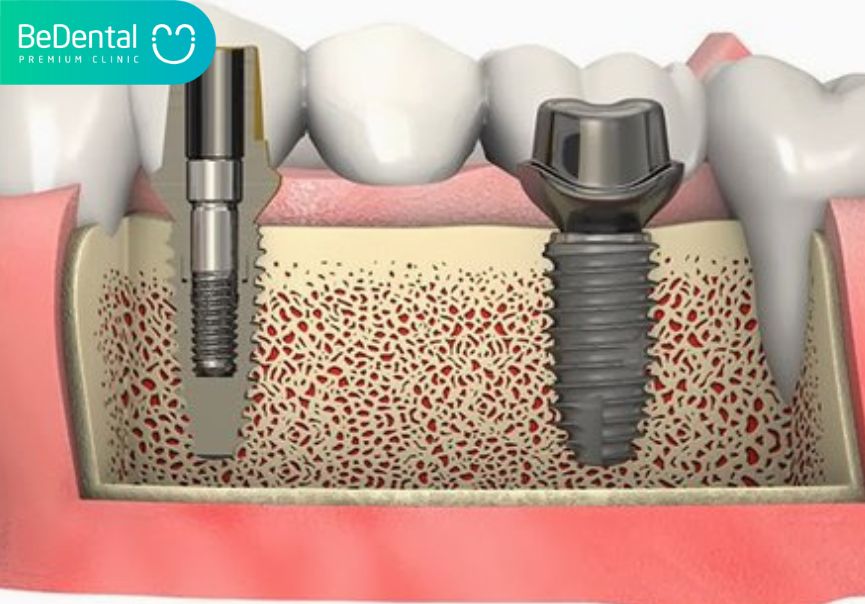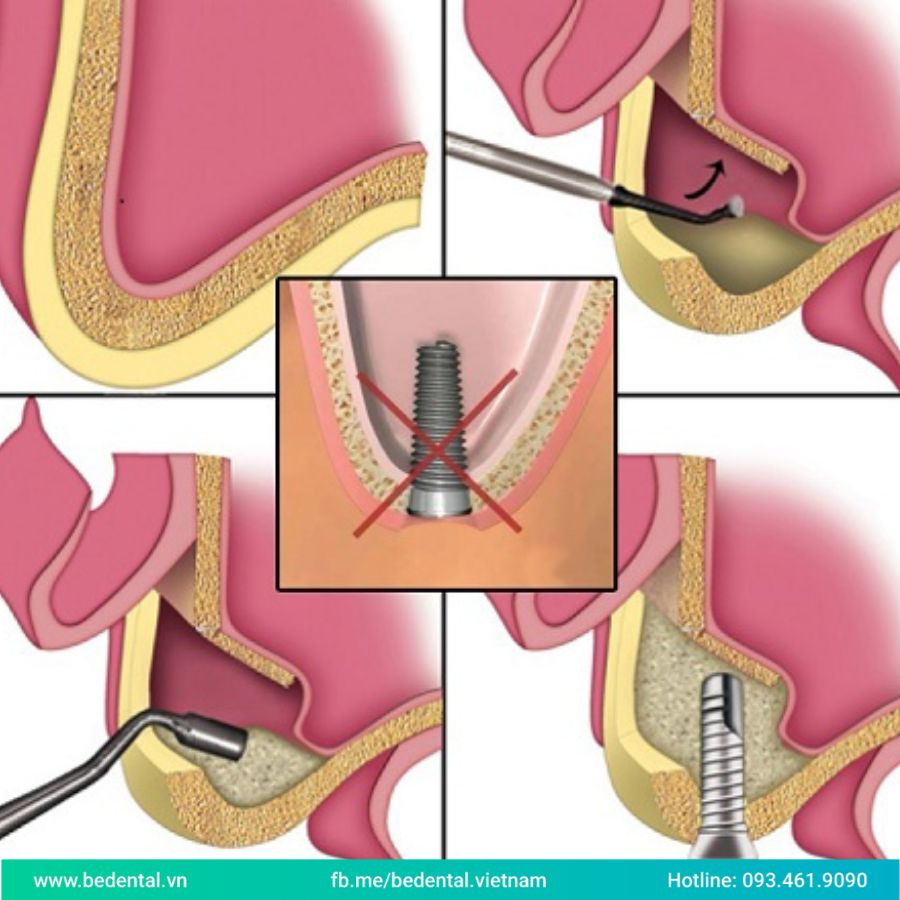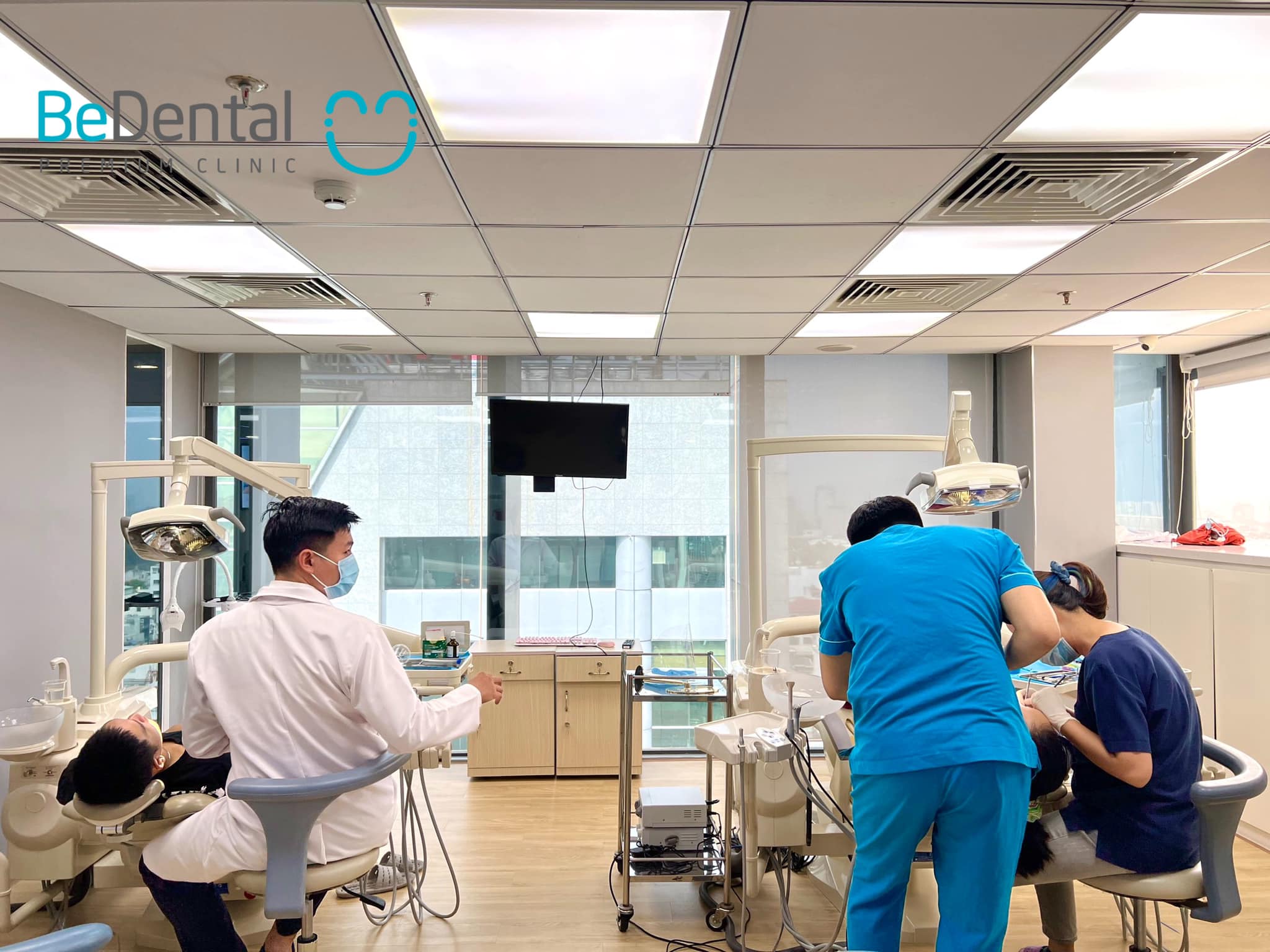What is Maxillary sinus augmentation in dental implants? What is this use for?When teeth are lost for too long, the jaw bone will be destroyed or degraded and not eligible for dental implants. Therefore, sinus Maxillary sinus augmentation technique was invented to support people who have lost their teeth for a long time to be able to implant as usual. If you need to learn about maxillary sinus augmentation techniques in dental implants, don’t miss the following article of BeDental. We will help you have the most detailed view of maxillary sinus augmentation.
What is Maxillary Sinus Augmentation for Dental Implants ?
Before knowing about Maxillary Sinus Augmentation for Dental Implants, you should comprehend the true nature of maxillary sinus augmentation, known as sinus floor elevation. Usually the upper and the right side, the left side of the jaw will have a maxillary sinus located inside the maxillary bone. But in people who have been missing teeth for a long time, the bone in the alveolar region has been reduced and the jaw sinus is lower. This will make the implant placement process difficult and unsafe.
For that reason, conducting a sinus floor elevation is something that is prescribed by a dentist. Sinus floor elevation is a procedure performed with the aim of increasing bone volume, helping the jawbone to satisfy the conditions in terms of height, density, and volume for implant placement. Because only when these conditions are achieved, the implant post can stand firmly in the jawbone.
Thanks to the maxillary sinus augmentation, the placement of the implant post can quickly be compatible with the bone, and at the same time firmly support the restoration of the teeth to achieve the best aesthetic results.
Maxillary Sinus Augmentation for Dental Implants is a procedure in which doctors will place an autologous bone or artificial bone between the sinus membrane and the bone surface at the base of the maxillary sinus. The purpose of this is to increase bone density and ensure enough position for the implant post to stand.

Who are candidates for sinus floor elevation ?
See more: Implant Tekka
Depends on oral health condition, doctors will make a decision on whether or not to have maxillary sinus augmentation. Cụ thể, những trường hợp cần thiết tiến hành kỹ thuật này đó là:
- The upper jaw bone has not been lost too much, but the bone volume is lacking, unsatisfactory to continue implanting.
- The sinuses to fall too deep comes from tooth loss for a long time with a lot of bone loss and bone density is thin
- Patients who have lost their upper teeth for a long time cause pressure on the lower jaw bone. This makes the upper jaw bone be reduced, enlarged and unsuitable for implant.

Is maxillary sinus augmentation for dental implant necessary ?
When patients know they need to carry out a sinus floor lift before implant, most customers feel extremely worried. Partly because of additional costs, partly because of fear of pain and longer cosmetic restoration time. Therefore, many customers have intended to only plant implants but skip the step of sinus lift.
But maxillary sinus augmentation is a compulsory surgery if clients severe bone loss or degenerated maxillary sinus because:
- Lifting the maxillary sinus will increase the width of the upper jaw to create a spacious and convenient space for dental bone grafts
- Maxillary sinus augmentation will help ensure the length of the implant is inserted without damaging the jaw bone, and at the same time, the post stands more firmly in the bone.
- Thanks to the sinus floor elevation process, the implantation will be guaranteed to be safe when it is possible to prevent complications of implant rejection or the implant post puncture the maxillary sinus wall.
Maxillary sinus augmentation techniques
These day, there are 2 popular methods of maxillary sinus augmentation : the horizontal (lateral window) sinus lift and the vertical (crestal window) sinus lift.
See more: Implant Osstem
Horizontal sinus lift
What is horizontal sinus lift ?
Horizontal sinus lift known as a lateral sinus lift, is a larger lift grafting procedure. In this procedure, the tissue is removed to allow access to the maxillary sinus.
Who will need this ?
It depends on the patient’s situation.
Doctors will determine which one is best for patient’s situation so make sure come to examination
The process
There are 6 steps to do horizontal sinus lift:
Step 1: General examination and CT scan to know the exact bone condition
Your doctor will examine you to assess your current sinus condition. Through images, the doctor will determine how low the maxillary sinus is, whether there is a problem with the bottom of the sinus or if there is sticky, rough, fluid, deformed or not. Only then can the most appropriate treatment plan be devised.
Step 2: Antiseptic and local anesthetic
The nurse will disinfect and anesthetize the oral cavity to ensure that the whole sinus lift process is safe with a sterile environment. After that, the doctor will numb the area to be lifted so that during the minor surgery, the patient will not have to feel any pain or discomfort.
Step 3: Proceed to open the gums
After the anesthetic is completed, the doctor will open the gums with the following procedure:
- Incise the periosteal mucosa along the ridge of the jaw in the area of tooth loss.
- Separate the periosteal mucosa to expose the surface of the jawbone to be implanted.
Step 4: Separation and lifting of the periosteum according to the predetermined protocol
The doctor will use specialized dental forceps to easily separate and lift the periosteum and keep the periosteum in place. Manipulation at this time needs to be very precise, avoiding damage to the adjacent gum area.
Step 5: Bone grafting and fixing the position of the sinus membrane base
After the periosteum has been lifted, the doctor will carry out bone grafting through the hole drilled in the lower region of the sinus membrane until there is enough bone mass as previously calculated.
Step 6: Close the mucosa and schedule the implant appointment m
The implant is usually not placed until after a healing period.

Vertical sinus lift
What is vertical sinus lift ?
A vertical sinus lift is a minor lift done at the same time as the dental implant placement.
The implant is placed through the prepared area where the implant will go in.
With all aspects of the procedure going in the same “direction”, this method is a smaller procedure compared to a lateral sinus lift.
Hydraulic sinus lift technique combined with high-frequency ultrasound will be performed to bring absolute safety, limit invasiveness and increase the efficiency of sinus lift, and can be combined with implant placement in one appointment. .
The hydraulic sinus lift technique is performed as follows: at the hole drilled to place the implant, high-frequency ultrasound is used to separate the sinus membrane from the sinus bottom. Then use water pressure to push the bottom of the sinuses up.
Who will need this ?
Here are the suitable patients to proceed
- It depends on the patient’s situation.
- Doctors will determine which one is best for patient’s situation so make sure come to examination
- Make sure to tell your doctor about any medical conditions and any medications you take, including prescription and over-the-counter drugs and supplements.
- If you have heart conditions or orthopedic implants, your doctor may prescribe antibiotics before surgery to help prevent infection.
The process
There are 7 steps to do vertical sinus lift:
Step 1: General examination and CT scan to know the exact bone condition
Your doctor will examine you to assess your current sinus condition. Through images, the doctor will determine how low the maxillary sinus is, whether there is a problem with the bottom of the sinus or if there is sticky, rough, fluid, deformed or not. Only then can the most appropriate treatment plan be devised.
Step 2: Antiseptic and local anesthetic
The nurse will disinfect and anesthetize the oral cavity to ensure that the whole sinus lift process is safe with a sterile environment.
After that, the doctor will numb the area to be lifted so that during the minor surgery, the patient will not have to feel any pain or discomfort.
Step 3: Incise a line under the teeth
To perform a sinus lift, the doctor will open a small line about 3.6mm in diameter at the bottom of the tooth with specialized medical tools.
Step 4: Lifting sinus
After creating a sinus lift, the doctor will use a special pusher to help raise the maxillary sinus.
Step 5: Bone grafting
After the sinus lift, the doctor will inject the artificial bone inside through a specialized pump until there is enough bone to implant.
Step 6: Insert the implant post and sew the gingival flap
The vertical approach saves time as the implant can be placed at the time of the sinus lift.
Step 7: Filming checking
After minor surgery, the doctor will film an X-ray to check the condition of the implant post to see if there are any problems. If there is a risk of rejection or infection, the doctor needs to remove the implant immediately and wait until the periosteum is solid again before re-inserting the implant.

See more: Dental bone graft
Where can you get the service ?
The technique isn’t simple so it must be performed at reputable dental clinics with experienced doctors and modern facilities.
With the best dental professionals in Vietnam, BeDental brings devotion and dedication to every customer as if we were family. BeDental is a reputable and professional dental system with various branches in city centres, which helps customers travel easily. In addition, BeDental has the latest imported dental equipment, which is certified for safety by the Ministry of Health. 5-star facilities provide customers with a relaxing atmosphere while experiencing high-class dental services.
Besides, the cost of performing bone grafting sinus lift when implant is also clearly reported by BeDental so that customers can know it clearly. You can contact Hotline to get the latest price update.

The above article has helped you learn all the information about what is a maxillary sinus lift and the techniques in maxillary sinus augmentation. If there any questions, contact BeDental for the best answer.
